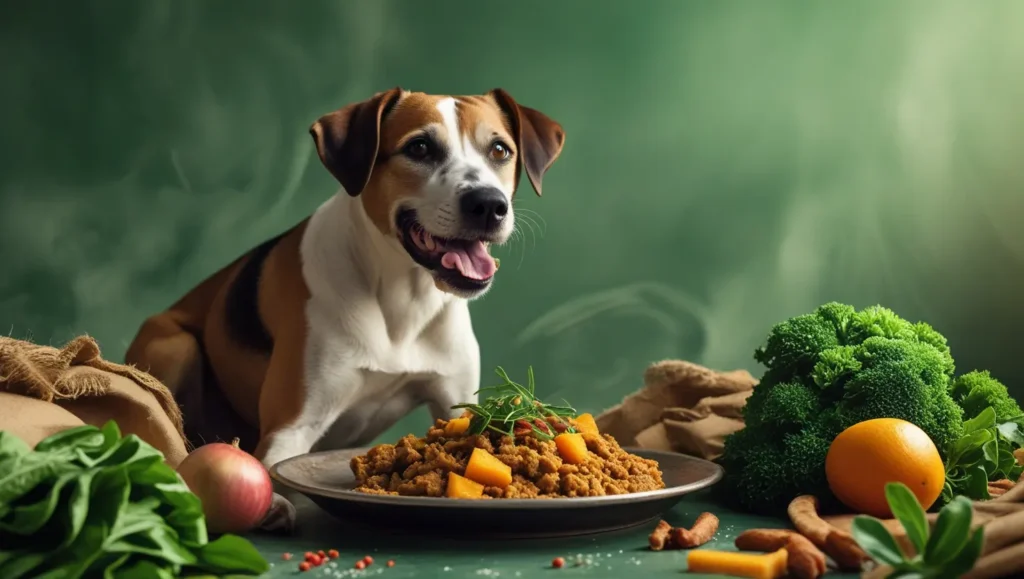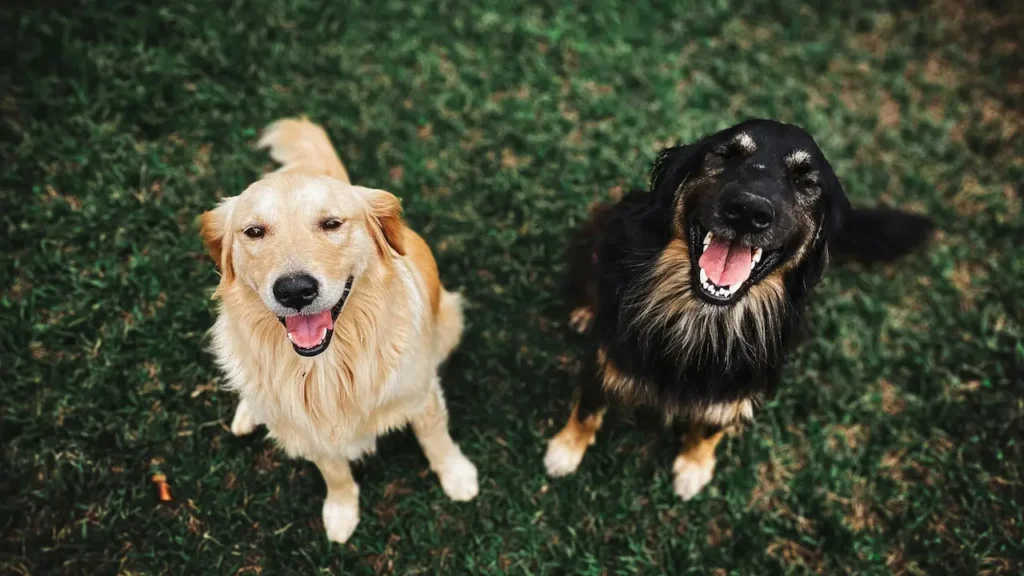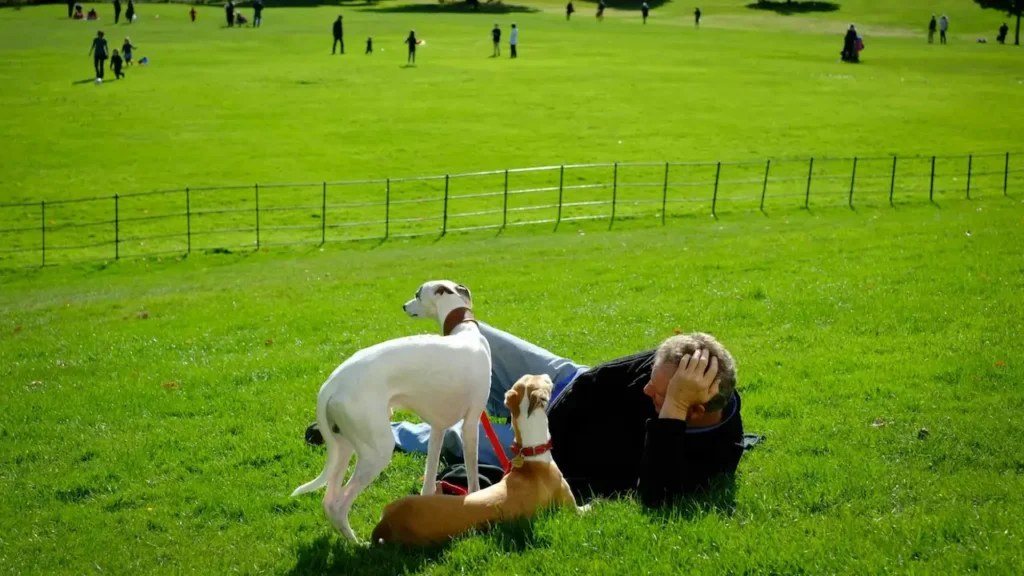Eating disorders in dogs can have serious consequences for a dog’s health. These disorders can stem from a variety of causes. Recognizing the signs of eating disorders early is vital life skill for you for the well-being of your dog. In this article, we’ll explore the different types of eating disorders in dogs, and their potential causes.
Common Eating Disorders in Dogs
Some dogs consume non-food items like dirt, rocks, and plastic. Some feels excessive hunger due to diabetes, Cushing’s disease, and parasites. Sometimes dogs lose appetite due to dental pain, gastrointestinal issues, infections, and stress. Nutritional imbalances, behavioral factors, and medical conditions are also responsible for eating disorders in dogs. Proper diagnosis, training, and veterinary care are essential for managing these disorders and ensuring a dog’s overall health and well-being.
Pica in Dogs
Pica is a compulsive condition characterized by the ingestion of non-nutritive, non-food substances such as dirt, rocks, fabric, plastic, and paper. This behavior can be dangerous, as it may lead to gastrointestinal obstructions, choking, poisoning, or internal injuries. Chronic cases of pica can also indicate underlying physiological or psychological issues that require veterinary intervention.
Possible Causes of Pica in Dogs
The exact causes of pica are not fully understood. But they are believed to stem from a combination of biological, environmental, and behavioral factors.
Nutritional Deficiencies: Iron, zinc, and calcium deficiency drive dogs to seek out alternative sources. Dogs finds non-food materials enjoyable. Some cases of pica are linked to malabsorption disorders.
Medical Conditions: Inflammatory bowel disease (IBD), exocrine pancreatic insufficiency (EPI), and parasites cause digestive discomfort in dogs. This prompts dogs to eat unusual objects. Anemia is another known trigger of pica.
Psychological Factors: Dogs experiencing anxiety, and obsessive-compulsive behaviors may develop pica as a coping mechanism. Sometimes, insufficient physical activity resorts to ingesting non-food objects out of frustration.
Hormonal Factors: Endocrine disorders contribute to abnormal eating behaviors in dogs. Neurological conditions, such as cognitive dysfunction in senior dogs, have been linked to pica.
Polyphagia in Dogs
Polyphagia is a condition characterized by an excessive increase in appetite. Dogs with polyphagia exhibits different food-seeking behaviors. They beg for foods in a constant manner, steal foods and eat foods much faster than usual.

Possible Causes of Polyphagia in Dogs
Polyphagia can stem from a variety of physiological and psychological factors, including:
Medical Conditions: Diabetic dogs don’t produce enough insulin (Type 1) or cannot properly use insulin (Type 2). Glucose cannot enter cells efficiently. The body perceives it as a lack of energy and signals increased hunger. Excessive production of cortisol by the adrenal glands is another cause for metabolic disturbance. It leads to increased appetite, excessive drinking, and weight gain.
Nutrient Absorption Issues: Parasites like hookworms, tapeworms, and roundworms steal nutrients from the digestive system. The body signals hunger despite food intake. Pancreas failure leads to malabsorption, weight loss, and excessive hunger.
Medications: Certain medications cause increased appetite as a side effect. Dogs recovering from illness also exhibit temporary polyphagia.
Psychological Factors: Just like humans, some dogs engage in stress-eating. Anxiety-related polyphagia can be triggered by environmental changes, separation anxiety, and competition with other pets. Some dogs develop food-seeking behaviors due to inconsistent feeding routines, excessive treats, and past experiences with food scarcity.
Anorexia in Dogs
Anorexia in dogs refers to a reduced appetite and complete refusal to eat. Prolonged disinterest in food signals an underlying health issue. Canine anorexia is a symptom rather than a disease itself. There are two main types:
True Anorexia: The dog has no desire to eat due to illness, pain, and metabolic dysfunction.
Pseudo-Anorexia: The dog wants to eat but is physically unable to, often due to pain.
Possible Causes of Anorexia in Dogs
Anorexia in dogs can be caused by a variety of medical, psychological, and environmental factors:
Dental Problems: Tooth pain, gum disease, broken teeth, and oral tumors make chewing painful. Excessive tartar buildup and abscesses cause discomfort and reduce interest in food.
Gastrointestinal (GI) Disorders: Nausea, vomiting, and diarrhea can suppress appetite. Chronic inflammation in the intestines can cause discomfort and food aversion. Gastric ulcers and pancreatitis lead to stomach pain.
Systemic Illnesses: Uremia causes nausea and decreased appetite. Liver dysfunction affects digestion and cause lethargy. Conditions like parvovirus, leptospirosis, and severe bacterial infections cause fever, nausea, and anorexia.
Psychological & Environmental Factors: Changes in routine, moving to a new home, the loss of a companion, and separation anxiety can lead to reduced appetite. If a dog has experienced nausea after eating a certain food, they may associate that food with discomfort and refuse to eat it in the future.
Coprophagia in Dogs
Coprophagia is the act of consuming feces. It is not uncommon in puppies. They explore their environment with their mouths. Though, it is unpleasant. However, persistent coprophagia in adult dogs dictate a nutritional imbalance, medical condition, and behavioral concern that needs attention.
Possible Causes Coprophagia in Dogs
The reasons behind coprophagia are below:
Nutritional Deficiencies & Malabsorption: Dogs consumed feces due to Exocrine Pancreatic Insufficiency (EPI). This is a condition where the pancreas fails to produce enough digestive enzymes. Deficiencies in B vitamins, iron, and digestive enzymes may contribute to coprophagia.
Medical Conditions: Sometimesdiabetes and Cushing’s Disease cause excessive hunger in dogs. This drive dogs to eat anything available including feces. Nutrient deficiencies in dogs prompts coprophagia.
Instinctual Behavior: Mother dogs naturally consume their puppies’ feces to keep the den clean and reduce the risk of attracting predators. Some dogs may retain this behavior even after puppyhood.
Food Aggression in Dogs
Food aggression is a form of resource guarding where a dog becomes defensive, possessive, or aggressive when eating. This behavior can range from stiffening, and gulping food quickly to severe reactions such as growling, snapping, and biting when approached near their food bowl. Food guarding is an instinctive behavior seen in wild canines. But domestic dogs displaying food aggression can pose a safety risk to humans and other pets in the household.

Possible Causes of Food Aggression in Dogs
Past Trauma: Dogs that have experienced food scarcity may develop a survival instinct to guard food aggressively. Puppies raised in environments with intense competition for food may learn to eat defensively.
Lack of Socialization: If a dog was not exposed to positive experiences involving humans and food handling during early development, they may perceive approaches to their food as a threat.
Fear-Based Behavior: Dogs with high anxiety or past negative experiences (e.g., having food taken away frequently) may develop an excessive fear of losing food. This experience encourages them to show defensive aggression.
Binge Eating in Dogs
Binge eating in dogs refers to the rapid consumption of large amounts of food in a short period. This behavior leads to various health risks, including choking, regurgitation, vomiting, and gastric dilation-volvulus (GDV. Excessive binge eating indicates an underlying medical issue.
Possible Causes of Binge Eating in Dogs
Competition for Food in Multi-Dog Households: Dogs that have experienced competition for food—either in their current home or as a stray—may develop a habit of eating quickly to prevent others from taking their food. Resource guarding also contributes to fast eating. The dog feels the need to consume food before it is taken away.
Stress: Some stressed dogs eat rapidly as a coping mechanism. Stressful environments, loud noises, and unpredictable feeding schedules contribute to food-related anxiety.
Learned Responses: Infrequent meals develop fast-eating habits in dogs. Puppies that were part of large litters develope a competitive instinct for food, which persists into adulthood.




